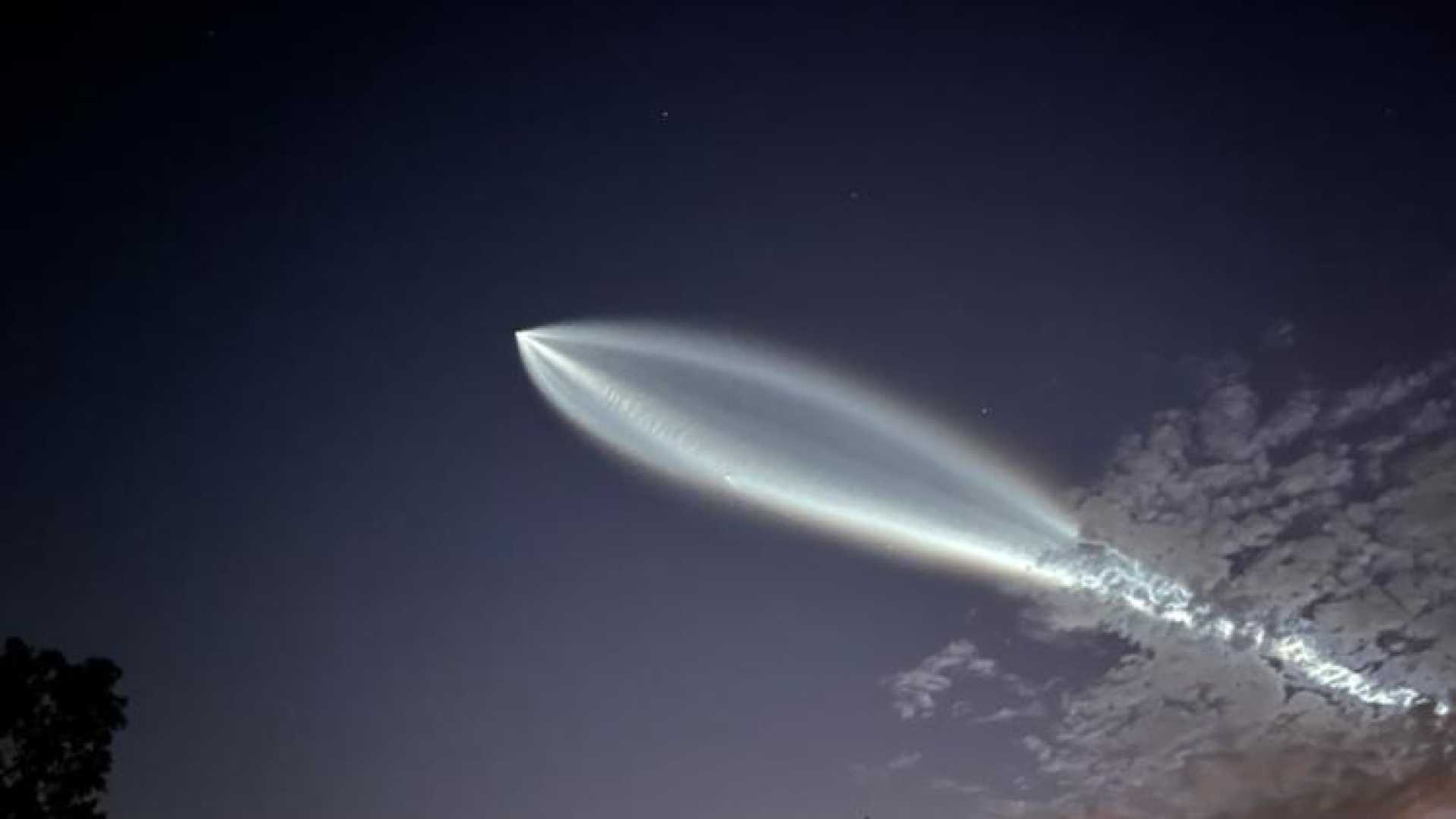Tech
SpaceX Launches Record 27 Starlink Satellites, Marks 400th Booster Landing

VANDENBERG SPACE FORCE BASE, Calif. — SpaceX successfully launched 27 second-generation Starlink satellites Tuesday morning, setting a new record for the number of satellites deployed in a single mission. The Falcon 9 rocket lifted off at 7:45 a.m. PST from Space Launch Complex 4 East (SLC-4E) at Vandenberg Space Force Base, marking the 10th flight for booster B1082.
The mission, dubbed Starlink 11-8, was initially delayed twice — first on Sunday due to an aircraft entering restricted airspace 11 seconds before liftoff, and again on Monday for undisclosed reasons. The successful launch on Tuesday culminated in the 400th booster landing for SpaceX, with B1082 touching down on the droneship ‘Of Course I Still Love You‘ approximately eight minutes after liftoff.
SpaceX’s latest Starlink satellites, known as V2 Mini Optimized, are 22% lighter than their predecessors, allowing for more satellites to be launched simultaneously. “These satellites have a new backhaul antenna powered by a SpaceX-designed and built dual band chip, called Doppio,” the company stated in its 2024 Progress Report. The upgraded satellites also feature enhanced avionics, propulsion, and power systems.
Since the beginning of 2024, SpaceX has been steadily increasing the number of satellites per launch, with missions typically carrying 23 or 24 satellites. The Starlink 11-8 mission, however, pushed this number to 27, a significant milestone in the company’s efforts to expand its global internet coverage. As of now, Starlink serves over 4.6 million active customers worldwide.
The launch also highlighted SpaceX’s growing expertise in rocket reuse. Booster B1082, which previously supported missions like USSF-62 and OneWeb 4, has now completed 10 flights. This achievement underscores the company’s commitment to reducing spaceflight costs through reusable technology.
SpaceX’s next Starlink mission is scheduled for Saturday, continuing its rapid pace of launches. The company remains focused on expanding its satellite network to provide high-speed internet to underserved areas around the globe.












